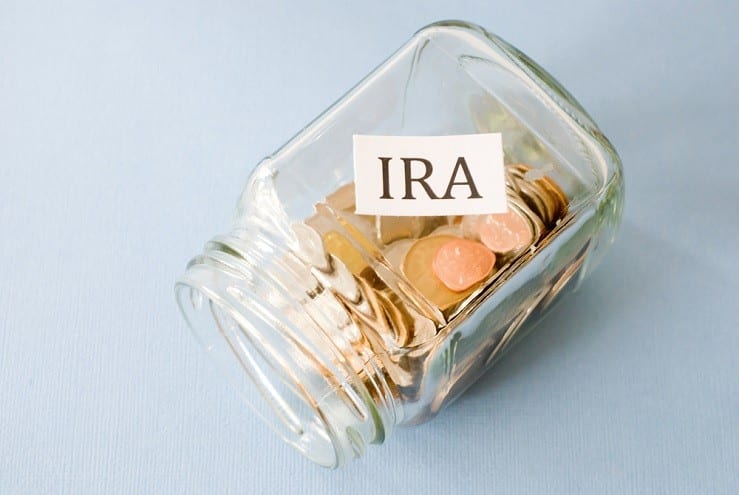Should You Empty Your IRA Early?

Every general rule has its exceptions. IRAs are no different.
The general rule for IRAs is to leave investments in them as long as possible. Your wealth will increase if income and gains are allowed to compound tax deferred as long as possible. We demonstrated that in the September 2003 discussion of which retirement accounts should be spent first in retirement. Our conclusion was that in most cases taxable accounts should be spent down before tax-deferred accounts are tapped.
Yet, there are people who should consider spending their IRAs first. In fact, they should consider emptying their IRAs long before they need the money for spending. This counterintuitive strategy can be the best action in some cases because of the way some parts of the tax code interact. We discussed this strategy in the April 2001 issue. I’m revisiting the strategy to see if the 2003 tax law changes anything.
You know that after reaching age 70 1/2, IRA owners are required each year to take minimum distributions (RMDs). The IRS revised the rules in 2001 and 2002 so that lower distributions are required than in the past. Yet, even under the new schedule the distributions will increase each year as the owner gets older, whether the distributions are needed for spending or not. The distributions will be taxed as ordinary income.
There also is the effect on heirs to consider. Heirs must take RMDs from inherited IRAs and must pay ordinary income taxes on distributions from an inherited IRA. This is in addition to any estate taxes paid on the IRA (though there can be a tax deduction for some of the estate taxes). The heirs might end up with less than half the IRA’s value.
When heirs inherit a taxable investment account, distributions are not required. In addition, the tax basis of the assets is increased to their fair market value on the date of the original owner’s death. That means no capital gains taxes are due on the appreciation during the owner’s life.
The RMDs continue under the 2003 tax law. But the 2003 tax law does reduce the income taxes on the RMDs. Offsetting this is that taxes on investments held in taxable accounts are reduced and probably are reduced more than the taxes on IRA Distributions.
Let’s see if it makes sense for everyone to continue compounding wealth in an IRA or if it might make sense for some people to pay taxes now and invest the proceeds in a taxable account.
Suppose Max Profits is 65, has a $1 million IRA that earns 9% annually, and is in the top tax bracket. He has to begin RMDs after age 70 1/2, and the first distribution will be $56,154. Five years later the RMD will be $78,011, and at age 82 the distribution will be $145,308. If Max lives to age 90, the RMD is up to $243,077. At that point the IRA is worth more than $2.5 million.
Max’s expenses aren’t likely to rise at that rate. The more money that Max leaves in the IRA to compound, the greater the distributions and income taxes on those distributions will be during his and his heirs’ lifetimes.
Max will pay a 35% federal tax rate on these distributions, plus any state income taxes. If Max hadn’t already been in the top tax bracket, the RMDs would push him into it. For some taxpayers, the RMDs could increase taxes on Social Security benefits and cause the loss of other tax benefits because of the phase out of deductions and exemptions for higher income taxpayers.
To make the example extreme, if Max lives to 100 and takes only the RMDs, he’ll pay just over $2 million in federal income taxes on these distributions at the 35% rate. The exact amount of taxes will depend on Max’s other income, deductions, and other factors. He still will have over $1.6 million in the IRA that will be taxed when distributed to him or his heirs.
Suppose instead that Max decides not to let the IRA grow so much in order to avoid the higher income taxes down the road. Max decides to take enough distributions so that the IRA grows no more than 4% from its original balance. Then, the lifetime taxes on the distributions at age 100 are down to just over $1.2 million. (Under prior law, before the tax cuts, this was about $1.5 million.)
Suppose Max puts into a taxable account the after-tax distributions that exceed the RMDs. That account grows 7% annually before taxes, and taxes are paid at a 15% rate each year. By age 100, the taxable investment account exceeds $2 million. The IRA still is worth over $700,000.
In this scenario, Max’s heirs have more after-tax wealth available to them if he limits the growth of the IRA. The IRA still has significant value, and they will be able to spend the value after income taxes. All or most of the taxable account is available to them without additional taxes.
Running the numbers until Max is 100 exaggerates the effects. Suppose Max passes away at 80. The IRA would be worth over $1.1 million ($736,000 after income taxes), and the taxable account would be worth over $615,000. By comparison, if Max took only the RMDs, at age 80 the IRA would be worth over $2.2 million. That is about $1.5 million after income taxes at 35% and not counting estate taxes.
That means at age 80 the benefits of early IRA distributions are a closer call. Keep in mind that I’ve skewed the results to favor letting the IRA compound by assuming the taxable account will be invested to earn less than the IRA and will be taxed at 15% each year. The return could be the same as the IRA, and the taxes lower.
Let’s go a step further and have Max decide to take distributions to allow no growth in the IRA’s value after age 65 and lives to 80.
The lifetime taxes on the IRA distributions are over $472,000. The IRA is worth $1,090,000 ($708,500 after taxes), and the taxable account is worth almost $700,000. Again, those amounts are close to the $1.5 million after-tax value of the IRA if only RMDs are taken.
The benefits of taking more out of an IRA than the law and spending needs requires depends on the specific facts.
The strategy should be considered by those whose IRAs, after considering their other sources of income, greatly exceed their lifetime spending needs. In effect, the IRA is operating as an emergency savings account or a supplement to other sources of income. In those cases, benefits can be generated by getting money out of the IRA early instead of letting it compound indefinitely.
The earlier one begins the strategy, the better the results will be. (Don’t begin before age 59 1/2 to avoid the 10% premature distribution penalty.) You will pay income taxes on the early distributions, and you can invest in the taxable account only the after-tax amount of the distributions. The taxable account will need time for the investment returns to make up for the taxes.
Also important are the assumptions you make about rates of investment return, tax rates and turnover in the taxable account, and your longevity. Other factors are whether the RMDs would push you into a higher tax bracket, cause you to lose itemized deductions and personal exemptions, or increase taxes on Social Security.
The prime beneficiaries are people like Max: A relatively young retiree whose IRA exceeds by a significant amount likely lifetime spending needs. Without extra distributions, future RMDs would force large taxable distributions as the owner ages. Lifetime taxes by the owner and his heirs would be much higher than if the IRA were emptied early, the taxes paid, and investment income compounded in a taxable account.
![]()





